 What follows is the text, slightly updated, of my address to the Dressage Horse seminar at Warendorf in 2010. While the invitation was a great honour, it was also very intimidating to be asked to address such a distinguished gathering, especially on a topic that so many people present knew so much about. What I tried to offer was a slightly different perspective, the view from outside. As I remarked about my book – The Making of the Modern Warmblood – I am sure there are many Germans who could have written the German section better, Dutch who could have charted the development of the KWPN better, and French experts who know far more about the Selle Français, but – so far as I know – my book is unique in that it looks at a global picture, at the flow of ideas and horses throughout all the major European breeding areas, and in this paper, I look at a few ideas that follow on from that…
What follows is the text, slightly updated, of my address to the Dressage Horse seminar at Warendorf in 2010. While the invitation was a great honour, it was also very intimidating to be asked to address such a distinguished gathering, especially on a topic that so many people present knew so much about. What I tried to offer was a slightly different perspective, the view from outside. As I remarked about my book – The Making of the Modern Warmblood – I am sure there are many Germans who could have written the German section better, Dutch who could have charted the development of the KWPN better, and French experts who know far more about the Selle Français, but – so far as I know – my book is unique in that it looks at a global picture, at the flow of ideas and horses throughout all the major European breeding areas, and in this paper, I look at a few ideas that follow on from that…
One of the interesting things about the development of performance horse breeding is that despite the very local nature of the development, just how similar the system that evolved was – right across Europe. In country after country, the pattern is repeated. Often the impetus comes from the State in search of better horses for military purposes, or to improve agriculture. More curiously, the development is sometimes tied to the breeding activities of religious orders – although, as we will discover when we look at the success rate, even in the last ten years for breeding top competitive dressage horses, perhaps divine intervention is the secret key to success.
In district after district throughout Europe, the pattern was repeated, State sponsored stallions, increasingly required to have passed some sort of performance evaluation, are made available to local farmers whose one or two mares are but a part of a mixed farming operation. I well remember that this was still the rule when I first joined my friends at the Hanoverian Verband on one of their study tours in 1989. We travelled through Lower Saxony, visiting the mare shows, and usually staying the night at the hotel that was invariably near the breeding station.
story continues below the advertisement
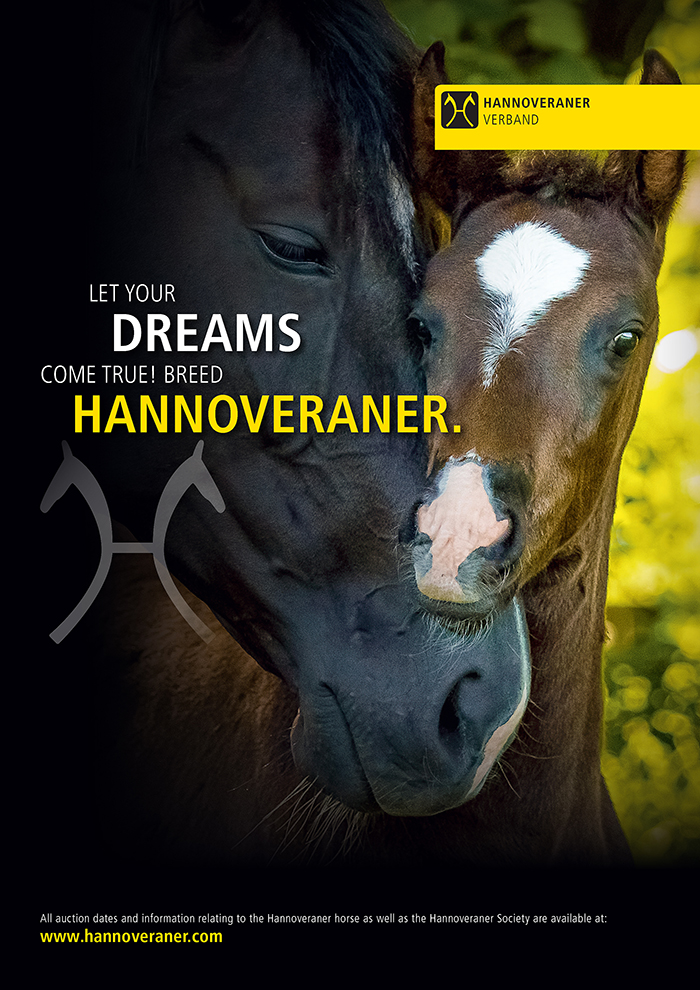
The breeding station was also a focus of social life, a place for parties and celebrations, for old friends to meet for a quiet schnapps while their mares were served by one of ‘their’ stallions. Even if they had wanted to, the farmers had little choice but to breed to the stallions sent to their local station. Chilled semen was still a few years down the road, and horse transport was somewhat primitive – the mares still often arrived at the show in a crate towed by a tractor, and yes, sometimes the feet pushing the accelerator, were encased in clogs. It turned the districts into a unique laboratory for stallion evaluation. Generation after generation of mares were bred to the same stallions, so that if a stallion crossed well on one of the mares, he was likely to do well with most of them. Live cover meant that all the stallions in the station received their share of mares, so even the apparently less attractive stallions, had their chance to prove themselves – the opportunity was there to discover the magic out-cross, the next infusion of new blood.
This pattern was repeated with subtle variations throughout Europe, and the breeding aim tended to be similar: a nice all-round horse, that could pull a plough, or the family in a carriage, and was still pleasant to ride. The pendulum would swing backwards and forwards from the lighter type for military use, to the heavier beast when the concentration was on agriculture. Really the idea of breeding for a specialist dressage horse is very much a recent development, indeed in some areas, like France, the breeders are still getting used to the idea.
The Emergence of the Dressage Stallion
For a while it looked as if the Swedes would make the running when it came to breeding dressage horses. Gaspari, who was born in 1949, pioneered the concept of a stallion that combined a competition and breeding career. He competed in the Swedish dressage team at two Olympic Games, in 1960 and 1964, and he went on to sire the 1972 gold medallist, Piaffe, along with a number of other Grand Prix competitors. Yet while Gaspari is the dam sire of the 1988 World Cup Champion, Gauguin de Lully, and he appears on the dam line of the recently retired Briar, it is almost impossible to detect his influence in modern dressage breeding and the Swedes seem to have lost the plot when it comes to breeding dressage horses. There is a reasonable suspicion that the dominance of the State Stud Flyinge for many years, in the absence of a vibrant private stallion section, produced a horse designed by a committee of public servants, pleasant, but lacking when it came to top competition, and the majority of breeders are still more interested in producing a jumping horse. Sadly, Flyinge is now no longer a breeding centre.
Weltmeyer, foaled in 1884 Werner Ernst image
In Hanover, Woermann is regarded by many as the first of the modern dressage sires, yet he was born as late as 1971, and his hugely influential sons, Wenzel and World Cup, were born in 1976 and 1977. At the beginning of the 80s the modern dressage specialists started to flower: World Cup’s sons Warkant – born in 1983 and Weltmeyer in 1984.
In neighbouring Oldenburg, Donnerhall, born in 1981, was to become one of the dressage trinity of WDR – Weltmeyer / Donnerhall / Rubinstein. In many ways, Donnerhall was more truly the fashion-setter. For a start, he was a competitor and a World Championship medallist at that, and a jewel in the crown at the first of the ‘glamour’ studs – Grönwoldhof. He produced a star out of one of his first crops, Don Primero, who went on to head the FN dressage breeding values for a number of years. Don Primero also anticipated three of the modern trends: the importance of the young horse class – he was a winner at the Bundeschampionate – and the emergence of Scandinavia as a dressage breeding power, since he was exported to Sweden, although in this respect, he has not been quite so influential as his Danish-based, full-brother-in-blood, Don Schufro. He also stood for Paul Schockemöhle, who having revolutionized the business of jumping horses, becomes increasingly important in the shaping the future of dressage breeding.
story continues below the advertisement
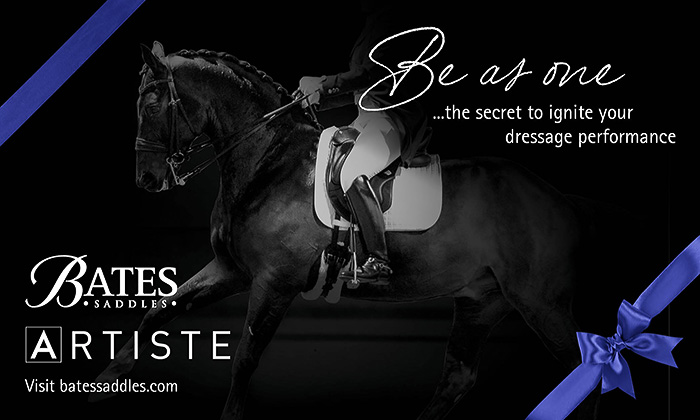
The Oldenburgers are ever the opportunists, and when Westfalia declined to license Rubinstein (born in 1986), they were happy enough to approve him – and the third of the dressage trinity was in place.
Rubinstein, a stallion and a competitor
Again, Rubinstein was a stallion who followed the trend of using a competition career to bolster his breeding career. He won a number of Grand Prix, and was at one stage a serious candidate for the German team.
Florestan at home in Warendorf
Florestan was also born in the same year as Rubinstein, and his success in Westfalia paved the way for the blood of Furioso to return to dressage breeding in Germany.
The Trakehner Influence – A Contant Threat
At this point we should note the influence of the one breed that never took the agricultural path, the Trakehner. If we look back to the German gold-medal-winning team in 1936, the Trakehner Kronos is not unlike the current superstar, Totilas, perhaps he looks a little more refined and modern – Kronos that is.
The Trakehner continued to play an important role in dressage breeding, but perhaps because in the 50s and 60s the Trakehner breeders became fixated on breeding the prettiest of the prettiest, the worth of Trakehner blood has been more evident when out-crossed to produce greater athleticism.
Weltmeyer is out of a mare by Absatz, the son of Abglanz, one of the Trakehner refugees from the East that played such an important role in turning the Hanoverian away from the agricultural connection and in the direction of the modern riding horse. Indeed, Dr Bade, the director of Celle from 1979 to 2007, told me that he felt the arrival of the Trakehners had been the most important influence during his time, along with the large scale cull that occurred when the agricultural market disappeared and the mare band shrank from 30,000 in 1948 to 6,500 in 1963, only to steadily increase as the Hanoverian emerged at least for a while, as the modern dressage horse.
Gribaldi, competed at Grand Prix level
The KWPN studbook headed the 2010 dressage rankings and three out of their five representatives were by Trakehners: Totilas and Painted Black, both by Gribaldi, and Nadine by Partout, and in keeping with the modern trend, both Gribaldi and Partout competed at a Grand Prix level.
story continues below the advertisement
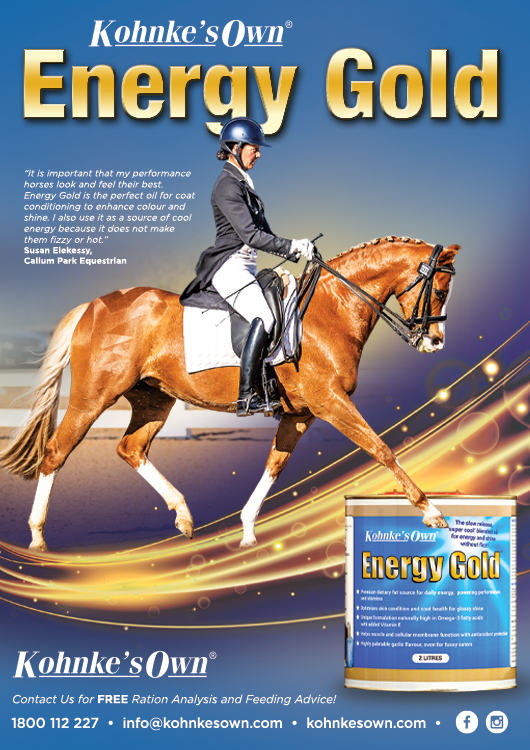
The Role of the Thoroughbred
The emergence of the Hanoverian dressage horse was greatly aided by the visionary Hans Joachim Köhler (1917 to 1997), whose auctions had much to do with changing the shape of the modern Hanoverian. Köhler held the first Verden auction in 1949, he retired in 1984 after conducting 70 elite auctions.
Along with the Trakehner, the Thoroughbred has been crucially important in producing the modern dressage horse: as indeed it was in producing the modern showjumping horse, not to mention the modern eventer. Köhler liked horses with ‘blood’ and to be selected for his auction a good dash of Thoroughbred was an advantage. By 1950, the proportion of Thoroughbred blood had fallen to 1.8% of the total Hanoverian population. By 1965, 6.9% of the 160 stallions at Celle were Thoroughbreds, and by 1975, the percentage had risen to 11%.
It was a trend that was to increase as Hanoverian breeding swung more and more in the direction of the dressage horse. Florian Sitzenstock, from the University of Goettingen, looked at the influence of the Thoroughbred in the Hanoverian studbook since 1985 and comes to the paradoxical conclusion that while the percentage of horses by full-blood or half-blood sires has diminished, the percentage of Thoroughbred blood in the Hanoverian population has increased.
The study examined the pedigrees of a total of 217,475 Hanoverian foals from 1980 until 2006 and found that the average proportion of Thoroughbred blood in the foals was 23%, with an increase from 20% in 1980 to 25% in 2006. During that period, the percentage of horses with no Thoroughbred blood, dropped from 40% to 4%.
The FN breeding values show that a proportion of Thoroughbred blood strongly relates to performance ability for both dressage and jumping, although for jumpers the infusion needs to be further back in the pedigree. An increased proportion of Thoroughbred blood positively influences the dressage breed value, while it has a negative impact on the jumper index.
The Dressage Specialist Trainer
The other factor that I feel is consistently ignored in discussions of breeding and studbook success, is the influence of trainers and riders, and here, Köhler was pro-active. His auction teams showed the horses brilliantly, but better still many of these auction riders went on to become trainers, widening further the market for the dressage horse, and indeed, opening a totally new market that has become increasingly important: the young dressage horse. Out of the auction team came Ulli and Bianca Kasselmann – whose PSI dressage barn is still the gold standard when it comes to dressage horse marketing – and young horse experts like Holga Finken, Ulf Möller and Hans-Heinrich Meyer zu Strohen.
In Holland we have seen the emergence of another group of highly professional dressage trainers and there too, the rise of the young horse classes, has produced a fast-track to dressage success. Instead of having to train a horse for five or six years, all we need are a few months under saddle and we have the instant stars of the young horse classes. It is great for an expanding ‘dressage industry’ – whether it is so great for the young horses is open to debate.
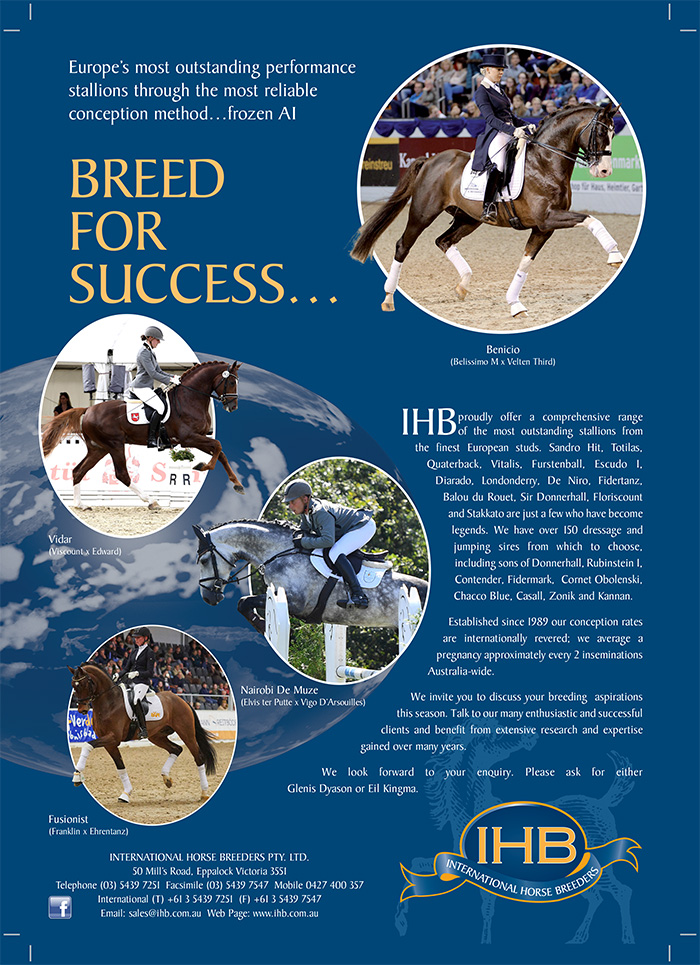
Nature or Nurture?
If, as the breeding texts sometimes give the impression, dressage success is simply a matter of genetics, then this mare must be the greatest dressage dam of all times.
The mare, Devisa, is by the Thoroughbred, Diego out of a grand-daughter of the great Westfalien jumping sire, Polydor. Not one would have thought, an enormously promising pedigree for a dressage matriarch.
Devisa is owned by the dressage trainer and rider, Wolfram Wittig, and he has bred a succession of foals out of her by his stallion, Breitling with startling success. The mare Baldessarini was born in 1999, she qualified for the Bundeschampionate as a five and six-year-old, for the Nürnberger Burg-Pokal and the World Young Horse Championships and is now competing Grand Prix. Biagiotti WW, a mare born in 2000, competed at the Bundeschampionate as a five and six-year-old, the Nürnberger Burg-Pokal, the World Young Horse Championships and is now Grand Prix.
The next year the stallion, Brioni W was born, again he went to the Bundeschampionate as a six-year-old, the Nürnberger Burg-Pokal and is now Grand Prix. The stallion, Bertoli W was born in 2002 and qualified for the Bundeschampionate as a three, five and six year old, for the World Young Horse Titles as a five and six-year-old, and is now competing Grand Prix. The gelding, Balmoral born in 2003 qualified for the Bundeschampionate as a five and six-year-old and the Nürnberger Burg-Pokal. Born in 2005, the stallion, Baron de Ley qualified for the Bundeschampionate as a five-year-old.
At the CDI3* in Vidauban, in the Grand Prix Dressage in March 2011, three full siblings all competed in the same class all by Breitling W and all out of Devisa. Wolfram placed 6th on the stallion, Bertoli W (born 2002), Brigitte placed 8th on the mare, Biagotti WW (born 2000) and 22nd on the stallion, Brioni W (born in 2001).
Wolfram and Brigitte – is the success really down to their training skills?
This is the chicken and egg problem in assessing any breeding program, how to filter out the influence of the trainer. While the Oldenburg breeders were want to suggest that Weltmeyer’s early success was due to the favoured treatment he received from Celle director, Burchard Bade in terms of the mares he served, the Hanoverian legions would suggest that Donnerhall’s success was ‘manufactured’ by the great training team of Herbert and Karin Rehbein… although with the ongoing success of the Donnerhall line all over the world, this line of argument is fast disappearing.
The Stallion from Somewhere Else…
One of themes that emerged in my study of European breeding was the influence of the border hopper, the stallion that moves from one side of Europe to the other, and in the process revolutionizes breeding in his new home. Despite the suggestion that the Selle Français horse is lacking in riding qualities and only good for jumping, there is a suspicion that the French stallion Furioso II might have been almost as influential in shaping the modern dressage horse as that other great Selle Français, Cor de la Bryère, has been in shaping the modern showjumper.
Imported by another visionary, Georg Vorwerk, Furioso II, a son of the great French Thoroughbred, Furioso xx, was approved in Oldenburg in 1967. He was immediately a success as a jumper sire, but still produced a respectable crop of dressage performers – however his current influence on dressage breeding has been a slightly circuitous process… the tradition in Oldenburg is to prevent a stallion’s sons from competing with their sire, so the better colts are often sold to other regions. The Furioso dressage line has recently made a spectacular comeback in Oldenburg with the sons of the Westfalien, Florestan: Fürst Heinrich, Flavio, Florencio and Florianus, along with his grandsons, the Farewell brothers, Fidertanz and Fürstentraum.
But it was over another border, in Holland that Furioso had an enormous impact in the making of the modern dressage horse. The Dutch came to sport horse breeding comparatively late – the KWPN was established in 1970 – but seem to have used this to their advantage, picking and choosing blood from whereever it looked promising. They too benefitted from a very strong system of private stallion ownership bolstered by the fact that stud fees were much higher than in Germany. Initially the Dutch focused strongly on showjumping horses, but the Dutch are nothing if they are not shrewd businessmen, and they soon spotted an emerging market for dressage horses – again, this went hand in hand with a training system that shot the Dutch dressage team into the world’s top three, culminating in the World title in 2010. By 2009, dressage foals are creeping up as a percentage of the total: dressage foals – 5,272, jumping – 8,028.
And one of the most important influences in the emergence of the Dutch dressage horse, has been the World’s number one ranked dressage stallion, Jazz – a son of the Grand Prix competitor, Cocktail who was in turn a son of the Oldenburger, Purioso, by Furioso II.
Just as when the Dutch first went to breed jumping horses, they imported first Selle Français then Holsteiner stallions, when they turned their attention to dressage, at first they were dependent on the Germans for their blood but because they were using a largely jumping-mare base, something interesting happened.
Jumping Blood – A Plus or Minus for the Dressage Horse?
Although there were a few dissenting voices, the Germans, particularly in the lead state of Hanover, enthusiastically embraced the goal of breeding dressage specialists, even if there was never a formal splitting of the horses bred for two disciplines as there was in Holland, and later, Denmark. The thinking was that the best dressage horses were going to be the ones with dressage on their top and bottom lines, but the Dutch found otherwise.
I guess there is no argument that the greatest dressage horse of modern – perhaps all – times, is the black jewel, Totilas. His sire, the Trakehner, Gribaldi, was a Grand Prix dressage competitor, but his dam, Lominka, is solidly jumping bred. By a son of the great Nimmerdor, her pedigree features two crosses of the massive Farn, one of that other great Holsteiner, Amor, and a cross of the jumping (yes, they did have them once upon a time) Trakehner, Marco Polo. Similarly, the current World Cup champion, Parzival, is by Jazz, but on his dam’s side we find another cross of Furioso through Le Mexico, one of the founding jumping sires in The Netherlands, along with the blood of Westfalia’s jumping progenitor, Pilatus.
Of course, we shouldn’t be surprised to find jumping blood at the top of the dressage tables – two of the horses that have been instrumental in Hanover topping the dressage standings year after year, Salinero and Satchmo, are solidly jumping bred.
What is interesting is the speed with which the Dutch have consolidated their lines. Thus the dressage champion at the 2011 KWPN stallion show, Diebrecht was by Zitzi Top who is a son of Grand Prix competitor, Tango who is a son of Grand Prix performer, Jazz who is a son of Grand Prix performer, Cocktail, out of a mare by Grand Prix star, Ferro. Warrant is out of a mare who competed to Advanced level dressage, and who is by the Ferro son, Kennedy, who competed Prix St Georges.
In 2012, the KWPN dressage champion, Etoine, flowed from yet another generation of Dutch dressage breeding. He is by Vivaldi, by Krack C out of a Jazz/Ulft mare, and his dam is by the Trakehner (there’s that influence again) Balzflug, out of a mare by that huge foundation Holsteiner sire, Amor.
Scandanavia – The Emerging Dressage Power-House?
Initially the Danes were really very much the poor relations of the neighbouring Swedes, and even after their breeding organisation was formed in 1962, they used the facilities at Flyinge for their stallion testing and the stallion ranks were dominated by Swedish stallions, but that was all to change, thanks in no small part to one stud: Blue Hors, founded in 1992. Here is another instance of the private stallion barn pushing the limits of dressage horse breeding to new heights.
In 1993, Esben Møller joined the staff at Blue Hors, four years later, he became the manager, and he was a man on a mission. The stud had already had success with Romancier (by Rosenkavalier) but Møller was aiming higher. “I wanted to buy Don Schufro. I rang Paul Schockemöhle, and no, they didn’t want to sell. So once or twice a week I rang, because it is better to buy one right stallion than ten normal ones. So I kept ringing Schockemöhle’s and then I think they got tired of me. They said they ‘might’ sell him, so we went to try him out, and two days later went back again, and bought him.”
In his first year in Denmark, Don Schufro covered 430 mares, eight years later, when I conducted the interview in 2005, he was covering 1,600 mares, all over the world, and has regularly occupied first place in the German FN breeding rankings, only displaced in the last couple of years. He also took stud rider, Andreas Helgstrand to placings in most of Europe’s top Grand Prix competitions, and a team bronze at the 2008 Olympic Games. These days, the Blue Hors stud roster is a who’s who of where-it-is-at in dressage breeding, and Esben Møller regularly takes home the top priced colt at major German and Dutch auctions.
Obviously he has not single handedly turned around Danish breeding. The Danish Warmblood Association is a switched on team and their annual Stallion Show at Herning is one of Europe’s top stallion and young horse happenings and they have vigorously promoted a specialisation with separate dressage and jumping lines.
Local Goes Global…
So now we are back where we started, except that everything has changed. Instead of the little stallion station with its two or three stallions, pub and stallion keeper in his quaint uniform, semen now flies from one end of Europe to the other. The mare owner picks the most fashionable stallion from the glossiest brochure, even the chauvinistic French, are now using imported semen and imported stallions. The breeders in Holland have always used German semen, but now the German breeders are returning the compliment while the Danes seem to be selling their semen to everyone. There are those who seriously suggest that except for the Trakehners and the Holsteiners who continue to follow the beat of their own idiosyncratic drums, all the rest of the German breed associations might as well merge into one German Riding Horse Association. It won’t happen, but with his ability to manipulate the market and ‘make’ stallions, Paul Schockemöhle and his PSI barn is more and more looking like the de facto German National Stud, and given the trans-national flow, why not an international dressage book? Certainly it is not easy to look at the pedigrees of the world’s top dressage horses and know for sure where they were bred…
So What Does It Mean For The Consumer?
Dressage breeding may have lost its local intensity, but the widespread availability of specialist dressage sires has, it seems, made it easy to select the dressage prospect. Of the top 30 horses on the 2010 FEI standings, we can confidently say that 26 of them were bred with a dressage career in mind. Of the top 20, almost half – nine – were sired by stallions that were themselves Grand Prix competitors. If we go back to the first WBFSH rankings – 1993/94 – of the top 20 horses, there was only one, Donnerhall, who was in turn by a horse that had competed Grand Prix, Donnerwetter, a finalist with Herbert Rehbein at the Hamburg Derby in 1990 and then was sold to the USA. Of the other stallions, only Romadour II, sire of the emerging superstar, Rembrandt, had really established himself as a dressage specialist.
Again we have the chicken and egg, nurture / nature debate: the most fashionable stallions produce foals that command the highest prices and so go to the most accomplished trainers – surely that ensures that they will be successful?
Well yes – and no. Yes, Donnerhall was hugely promoted as the star stallion at one of the first glamour studs, but the truth is that he has produced the performers, and the stallion sons that have produced performers. On the other hand, we need only think of Sandro Hit, to see another stallion that has been massively ‘hyped’, bred to the best mares, and whose uniformly beautiful foals went into the training barns of the world’s best dressage trainers, but where are the Grand Prix horses by Sandro Hit? Where are the team members?
De Niro, born the same year as Sandro Hit
Let us not forget that Sandro Hit was born the same year as De Niro, a stallion well-promoted but without the extra PSI gloss, who has produced 897 competitors – 133 of them at an S level – for winnings of €786,854. Sandro Hit in the same time has produced 721 competitors, 37 at S level, for winnings of €339,104.
Dear Reader, please bear in mind that this paper was written in 2010 – most of it still rings true, but there is no doubt that Sandro Hit, and his sons, are producing successful dressage horses. CH
In a world where breeding decisions seem increasingly dominated by the glossy catalogues and massive promotional campaigns, it would be nice to think that at least in part, quality is its own reward, although it is worth remembering, that De Niro went within a whisker of joining the lineup at PSI.
De Niro’s owner, Burkhard Wahler tells a great story – I’ll let him finish this presentation for me. Burkhard was very keen to buy De Niro at the Hanoverian Licensing, but as it was held the same weekend as the Trakehner licensing, Burkhard had to find someone else to represent him:
“I called my partner, Tönne Böckmann from the Böckmann stallion station, and I said, I am here in Neumünster, you go and buy that stallion…”
“It was in the days when they didn’t have a proper auction for the licensed stallions, just the people who are interested used to go into some rooms of the Verband office and bid amongst themselves for the stallions. Paul Schockemöhle was on the phone to the Hanoverian breeding director, Dr Wilkens who was doing the deal. The price went up to 150, 170, 180 Deutschmarks – so €80/90,000 – and Schockemöhle asked, who’s bidding against me? Oh it doesn’t matter… No, who is it? Böckmann. I want to talk to him… Okay, Paul said, I stop now, you buy him and we can talk later. But what he didn’t know was that Böckmann already had a partner!”
“Then on Monday the telephone was ringing, Schockemöhle’s manager was ringing Böckmann wanting to know how they were going to make the arrangements for the stallion. There’s one problem, Böckmann said, I have already a partner, and you have to talk to him. Two days later Paul calls me and says, listen I stopped bidding. And I said, yes Paul that was very nice, we have been friends for a long time… but now I have him and I am not interested in having a third owner in him. You should think about it, Paul said. At the end, I had no more arguments, and I didn’t know what to say, so I said, I really can’t decide – I have to ask my wife!”
“Paul said, are you crazy? Böckmann says ‘I can’t decide, you have to ask Wahler’. Wahler says ‘I can’t decide I have to call my wife!’ At the end Böckmann and I had De Niro ourselves. We got very lucky…”
Lucky? Or given that Burkhard bought a succession of really wonderful stallions: Caprimond, De Niro, Hohenstein, I think we are looking at something more than luck, it’s that elusive quality of real horsemanship and maybe that is really the secret to breeding great dressage horses.



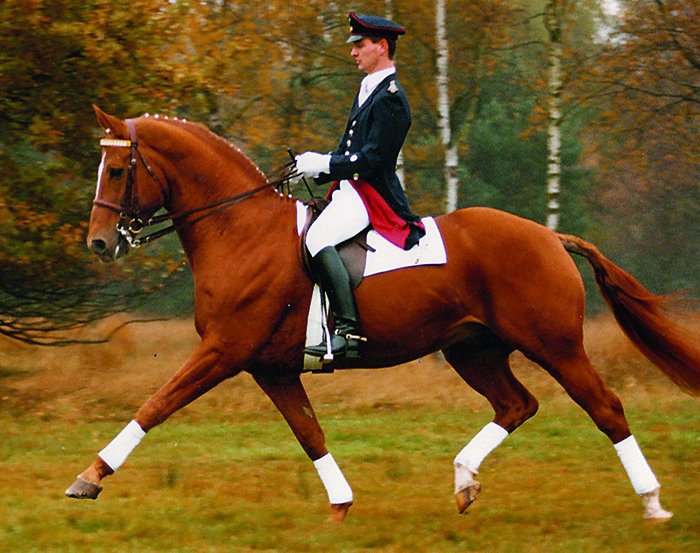
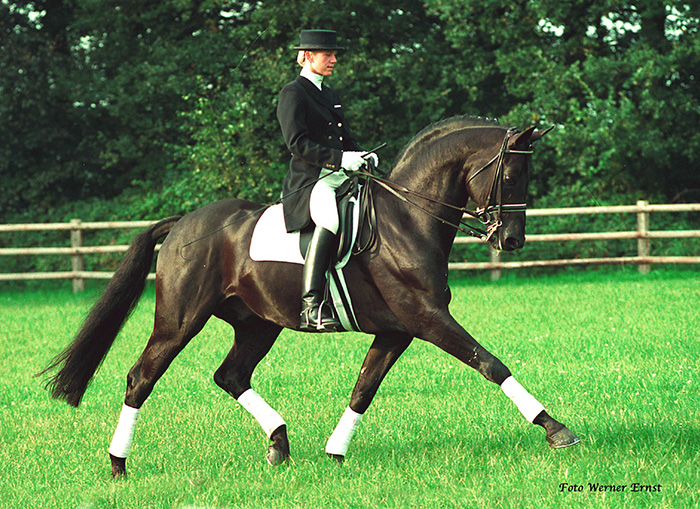
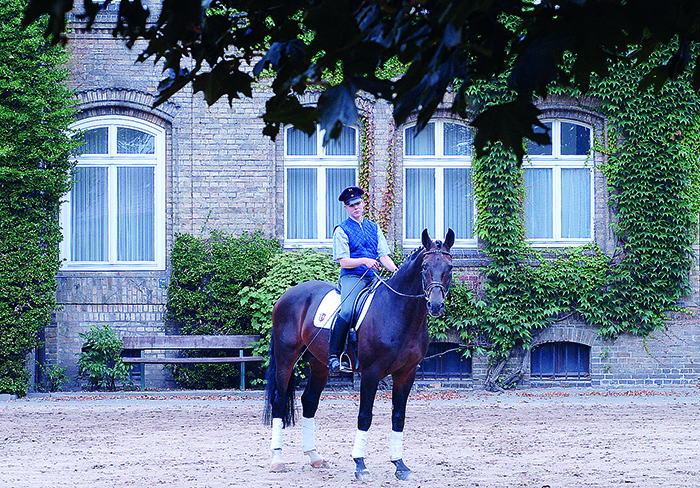
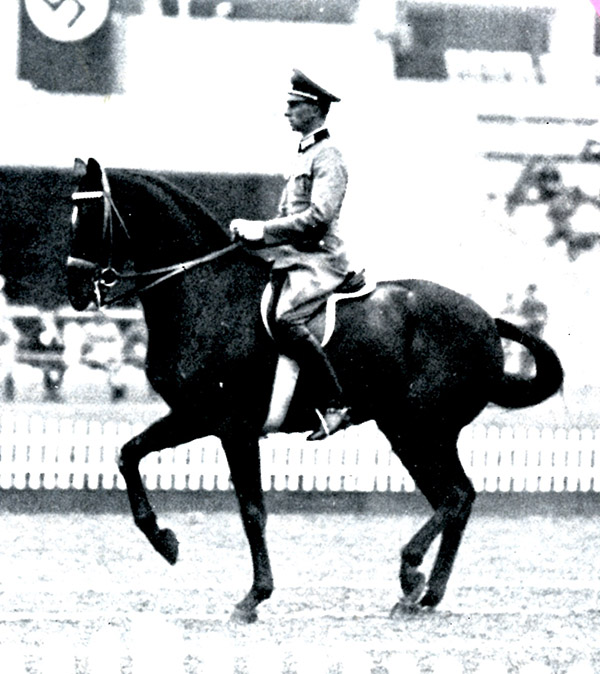
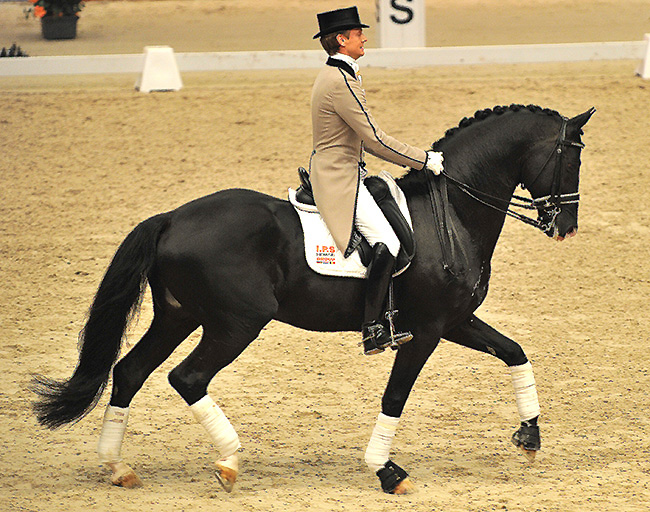







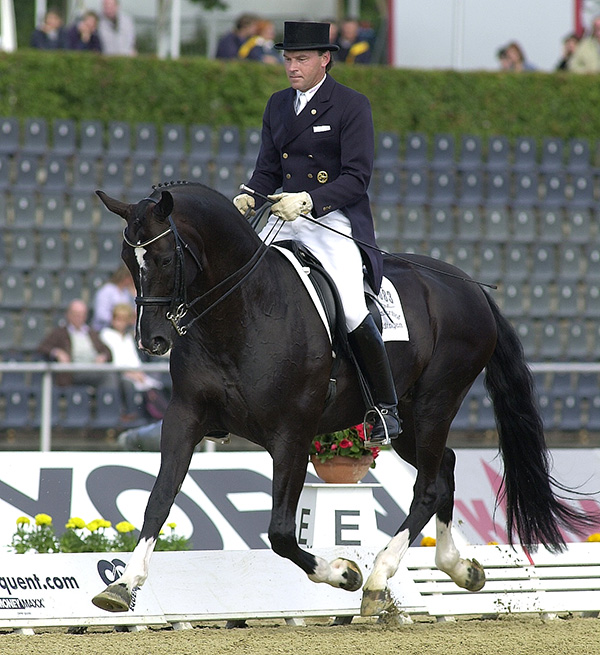


What a stunning piece! Thank you.
De Niro is something. Dablino, Delgado and so many others…
I am grateful for the passion and craziness of the top top breeders.
One of the great equestrian journalists writing on his passion. A fine and enlightening read.
Wonderfull piece- so enlightening! Very helpful for realistic decision on a stallion for my mare. Thank you so much.
Awesome article! I always wished I could find breeding articles like I can training articles- it is difficult for a small breeder with a few mares (especially here in the US) to really know the back story to the stallions and the lines.